
Chewing gums can be molded in any shape
Mar 01, 2018 Read time: approx. MinutesMinute
Molded into Shape
The colors, raw materials and other ingredients in chewing gum are always changing – but the actual shape of the gum has so far been limited. CAPIVA® C 03 from WACKER is coming to the rescue, as it allows manufacturers to deposit chewing gum into a variety of different molds.
Statistically speaking, 13.5 pieces of chewing gum a year go into the mouths of every human being on earth – a number derived by taking the volume of chewing gum sold in 2017 according to the Euromonitor market database (700,000 metric tons) and dividing that figure by the global population. The phenomenon is not new: humans have been chewing rubbery substances for thousands of years. Whereas northern Europeans chewed birch tar, the Romans preferred mastic, a resin obtained from the mastic tree. The Maya and Aztecs, on the other hand, consumed chicle, the latex of the sapodilla or naseberry tree. Chewing gum has continued to develop over the centuries, and now generally begins with a gum base that serves as a carrier for sugar, polyols or other sweeteners and flavorings.
New flavors have continued to pour in over the years, and the purpose of chewing gum has changed as well. No longer consumed just for enjoyment, chewing gum is now used as an oral-care product and as a means of delivering medications.
“Retooling the system in this way lets us make chewing gum in any shape we want on the same equipment we’d use for normal candy production.”
Patrick Knoll, Bosch Makat Candy Technology GmbH
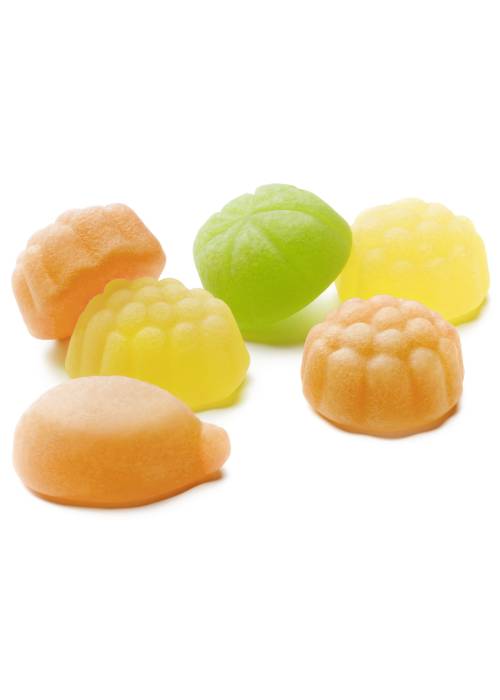
Shape limitations
While the composition and taste of chewing gum may be quite diverse, the shapes it can take have been limited up to now. The reason for this lies with the raw materials, which must be mixed while warm – whereas candies suitable for molding into any shape can be cooked. Chewing gum traditionally consists of a gum base, powdered sugar or polyols and concentrated flavorings. The mixture takes on a tough, sticky consistency at around 60 °C and has to be processed by special, high-performance equipment, after which it is forced through an extruder. The extruded material can then be cut into pellets (tabs) or sticks of various sizes, or it can be shaped into gumballs.
Chewing gum in any shape
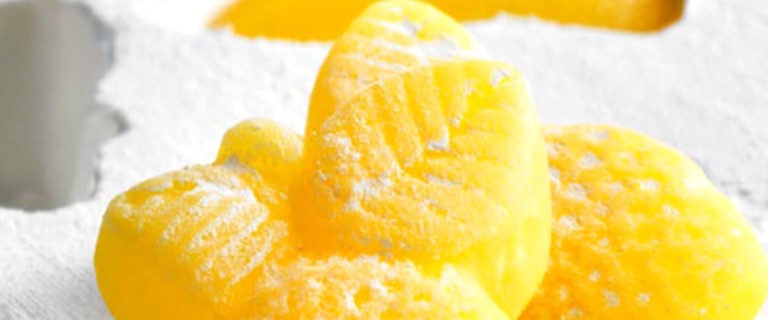
WACKER, one of the leading manufacturers of polyvinyl acetate solid resins for chewing gum, is introducing CAPIVA® C 03, a copolymer-resin-containing composition that opens up the door to entirely new shapes. Insoluble in water, this premix can be completely melted, allowing it to be blended uniformly into a sugar compound. “In other words, we’re producing a raw material that lets you cook chewing-gum-like candy and shape it however you want instead of going through an elaborate mixing process,” explains Dr. Thomas Wimmer, head of the chewing-gum lab run by the WACKER BIOSOLUTIONS division.
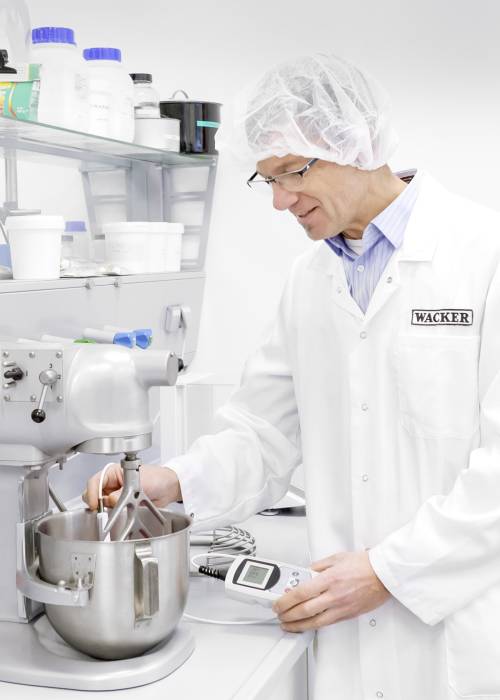
Dr. Thomas Wimmer working in his laboratory to create the perfect formulation.
Running tests in a pilot plant
The process also works on an industrial scale, as demonstrated by a pilot project carried out by a team from Bosch Makat Candy Technology GmbH, a subsidiary of Bosch Packaging Technology near Cologne, Germany, that manufactures specialty equipment for the confectionery industry. “Thanks to CAPIVA® C 03, we had to spend very little on additional plant components. So producing a huge variety of shapes is no problem on our existing mogul line,” says Patrick Knoll of Bosch Makat Candy, who worked on process-engineering issues with Dr. Alessandro Capuani, a business development manager in the Gum department of WACKER BIOSOLUTIONS.
Bosch Confectionery Technology specializes in developing and constructing what are known as mogul lines for large-scale manufacturing of gummy bears, jelly candies, etc. Through the introduction of heat, a continuous cooker upstream from these lines produces a homogeneous, crystal-free mixture that is then brought to the required molding temperature under vacuum, thus minimizing the water content of the mixture. Further ingredients such as colorings, flavorings or acid are then added.
Little investment required
The next step is where CAPIVA® C 03 comes into play. CAPIVA® C 03 can be melted in a bulk melter at 100–115 °C and pumped into the hot sugar solution through special dosing and mixing equipment. “Retooling the system in this way lets us make chewing gum in any shape we want on the same equipment we’d use for normal candy production,” Knoll explains. Stirring produces a homogeneous mixture that is immediately ready for molding via what is known as the mogul process, which involves depositing the mixture into prepared starch molds.
“The advantages of using starch molds are that you can create any shape you can think of and you can change molds quickly,” Knoll points out. The mogul process is suitable for a wide range of confectionery products, such as jellies, gummy candies, marshmallow candies, soft candies and fondants – and now for chewing gum too. Chewing gum made from CAPIVA® C 03 can easily be deposited, shaped and dried in silicone molds as well.
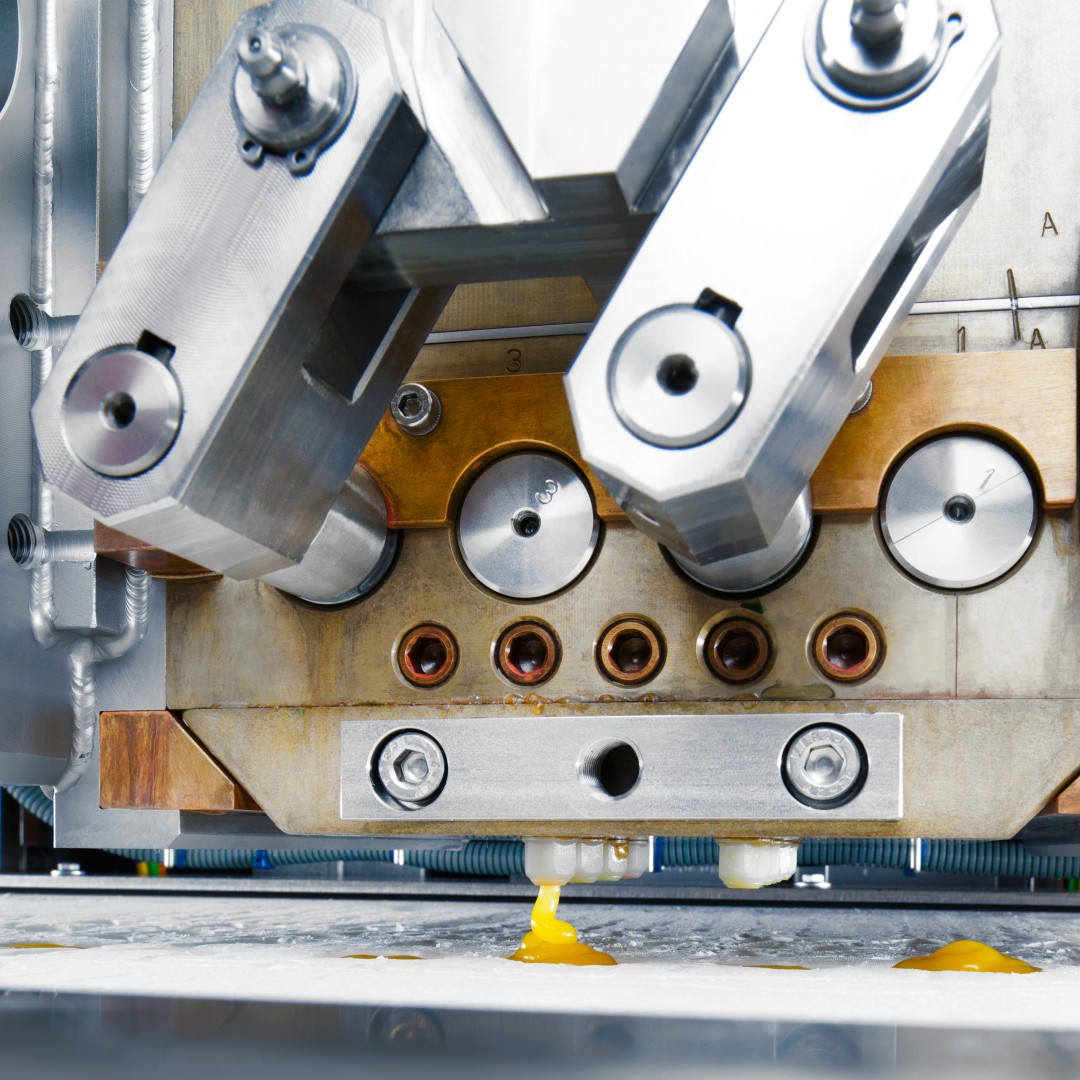
Bosch engineers used their equipment to test WACKER’s new formulation. The result is a mixture that is easy to use in conventional industrial confectionery-manufacturing equipment.
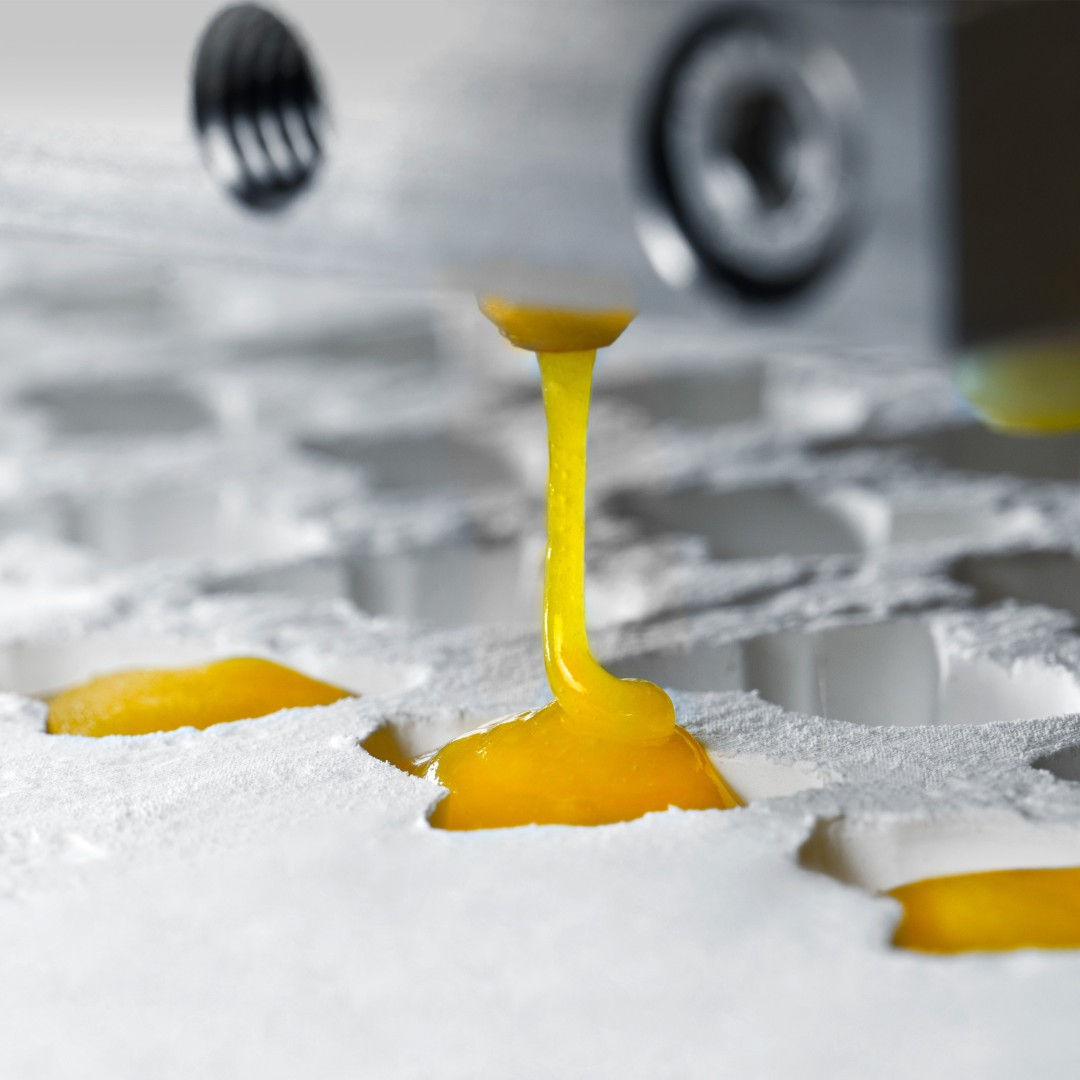
The rheology and viscosity of a mixture can be adjusted so as to prevent undesirable phenomena such as a stringy consistency or entrapped air.
“We can adjust and optimize the formulation to meet the customer’s technical specifications so that the production systems will run as smoothly as possible.”
Dr. Alessandro Capuani, business development manager in the Gum department of WACKER BIOSOLUTIONS
Working in Dr. Wimmer’s laboratory, Capuani collaborates with customers to work out the most suitable formulation for them. Changing the composition allows researchers to alter the rheology and viscosity of the mixture to create a depositable material that molds well and is easy to process, thus preventing undesirable phenomena such as a stringy consistency or entrapped air. “CAPIVA® C 03 allows us to offer formulations that don’t become stringy or that gum up the equipment – thus reducing the time spent on cleaning and the amount of material consumed,” Dr. Capuani adds by way of explanation. Chewing-gum ingredients formulated with CAPIVA® C 03 can be easily cleaned from equipment using hot water or common industrial detergents.
A flexible formulation
As with other confectionery products, the ability of molded chewing gum to retain its shape depends on the precise formulation and the ingredients used. “We can vary the formulation and the process parameters to make the product harder or softer. But CAPIVA® C 03 gives us greater versatility when it comes to the formulation,” says Dr. Wimmer. Another advantage is that the cooking process allows formulators to use a number of liquid ingredients that could not be used in the conventional process.
WACKER developers are convinced that CAPIVA® C 03 will open up many new opportunities. “By offering new moldable chewing-gum products, we hope to encourage our customers to bring more variety to the candy aisle without having to neglect classic chewing gum,” Capuani explains.
Contact
For more information on this topic, please contact:
Mr. Dr. Martin Seizl
Director of Global Business Team
WACKER BIOSOLUTIONS
+49 89 6279-1587
Martin.Seizl@wacker.com


